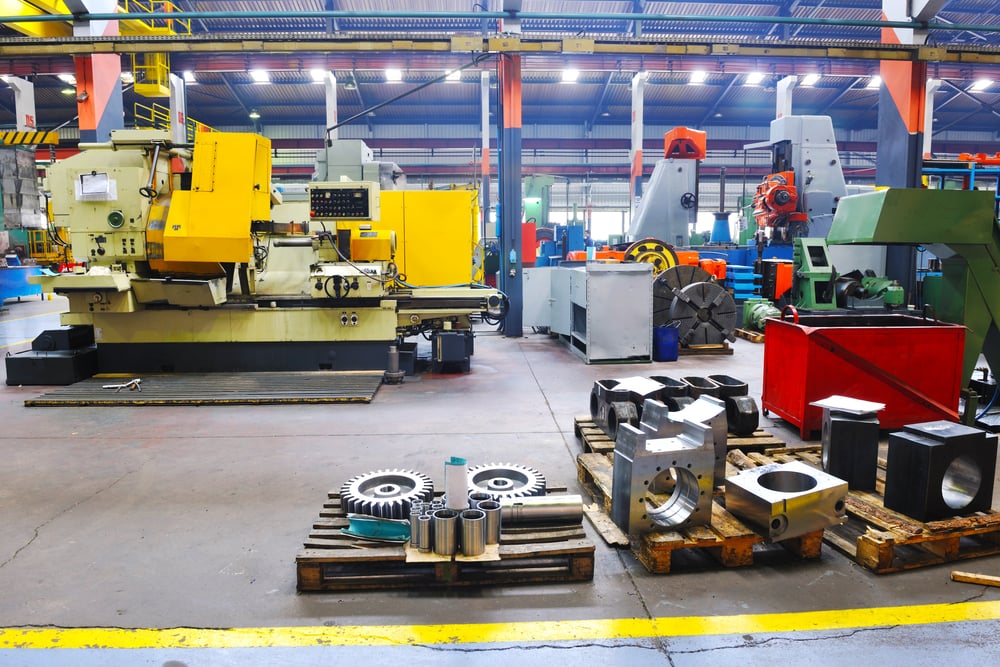As of 2021, fewer than 20 percent of warehouses are using automation in their daily operations even though automation continues to be a popular—and growing—trend for third-party logistics (3PL) warehouses. Estimates show the global warehouse automation market growing from $18.61 billion in 2021 to $30.99 billion in 2025.
So, what does automation really mean?
Automation Explained
Automation refers to eliminating manual, non-value added, repetitive processes with hardware and/or software to increase productivity, accuracy, safety, and reduce labor costs. In other words, automation executes tasks automatically without human input.
In warehousing, there are two main categories of automation: digital and physical automation. With digital automation, automatic data collection and software substitute human (paper-based) procedures. Anything IT-related also falls under digital automation. On the other hand, physical automation uses equipment and machinery (think robots) to replace employee labor in the warehouse.
Types of Automation in the Warehouse
Digital Automation
While both digital and physical automation streamline warehouse workflows, digital automation provides the foundation for the modern warehouse with software like warehouse management systems (WMS).
Not only is a WMS the foundation for becoming a tech-enabled 3PL, it also includes data capture, analytics, and automated capabilities like inventory tracking, order management, customer communications, business intelligence, picking and packing, and more. For example, WMS software replaces manual inventory tracking with an automated system that immediately allocates inventory for orders. Since the orders often come in through digital automation channels like application programming interface (API) integrations to online shopping carts and marketplaces, the system automatically keeps track of the location and quantity of all inventory, replacing the need to do it by hand.
Furthermore, some WMS software systems like Extensiv 3PL Warehouse Manager automate billing by automatically charging for all billable events and generating a customer-friendly invoice at the end of the billing period. So, once the rates are set up, no additional user input is needed. Extensiv 3PL Warehouse Manager also automates shipping in its Small Parcel Suite, which eliminates the need to manually import and export shipping details as well as manual data entry like typing out addresses and tracking numbers. Small Parcel Suite also automates rate shopping by finding the best shipping rates for each shipment at the click of a button.
It’s helpful to think of WMS software as the glue that connects different technologies, (i.e., mobile barcode and radio-frequency identification (RFID) scanners) used throughout the warehouse by collecting and analyzing data to optimize automated workflows. Mobile barcode scanning reduces errors while employees pick and pack in real time. The scanners and an application like Extensiv 3PL Warehouse Manager’s SmartScan record SKUs and serial numbers to automate these data-entry processes, making them faster and more accurate.
Other emerging automation technologies competing with mobile scanning for picking processes like pick-to-light and voice automated picking that further improve warehouse efficiency are both hands-free and paperless. Pick-to-light systems have buttons and alphanumeric displays at storage locations that guide employees to pick the correct inventory with light-up displays. With voice automation, an artificial intelligence (AI) voice system with speech recognition capabilities directs employees where to go and what to pick, significantly reducing the time it takes to pick inventory for fulfillment. Additionally, the ongoing development of computer vision stands out as a notable aspect in the progression of automation technologies in this particular context.
Physical Automation
In addition to digital automation, physical automation greatly increases warehouse efficiency while also making the warehouse environment safer for employees. There are many different types of machinery and equipment that fall under the category of physical automation, but the most common—and most popular—are autonomous guided vehicles (AGVs) and autonomous mobile robots (AMRs).
AGVs often still have an on-board human operator though they are self-guided, but AMRs do not have any human operator and move completely automatically. There are many diverse types of AGVs, including forklift AGVs, automated guided carts, and towing AGVs that all move without a human operator driving them. Instead, AGVs follow paths outlined by magnetic tape and wires, and AMRs rely upon sensors to map out their environments and guide them throughout the warehouse as well as when handling inventory.
AGVs and AMRs are essential in “goods-to-person” workflows where they pick inventory and bring it to human-operated packing stations. Supply Chain Brain claims that in non-automated facilities, workers spend 30% of their time just traveling from one part of the warehouse to another to perform their tasks, so using AGVs and AMRs to reduce travel time not only increases productivity dramatically, but it also contributes to a more efficient use of human labor.
Warehouse Automation Conclusion
Automation in the warehouse is only becoming more popular because of the gains in productivity and efficiency in practically all warehouse operations that use either digital or physical automation. According to the Third-Party Logistics Warehouse Benchmark Report, automating processes in the warehouse ranked as the second biggest opportunity for growth this year at 47%, and it is easy to see why.
For more statistics about the 3PL warehouse industry and the technologies other 3PLs utilize, check out the Third-Party Logistics Warehouse Benchmark Report.
-
You’ll read about:
Be the first to know
Subscribe to our newsletter





